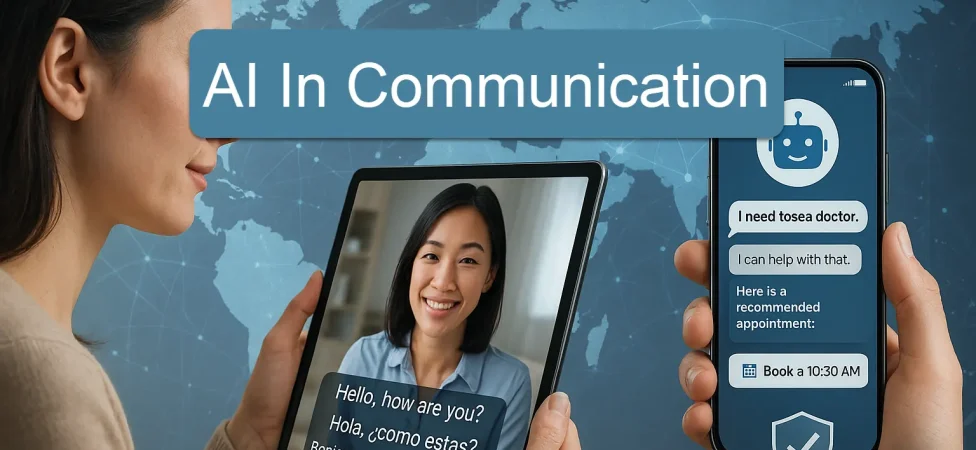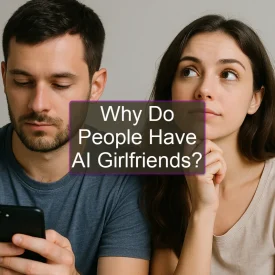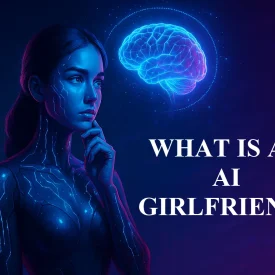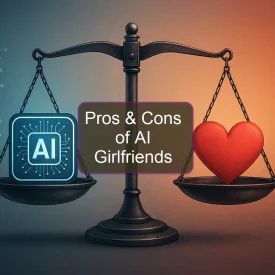Communication has evolved dramatically over the centuries, progressing from ancient pictographs and handwritten messages to the instant, digital conversations of today. At each stage, new technologies expanded our ability to connect. Now, artificial intelligence (AI) marks a transformative leap, bringing us closer to truly adaptive and intelligent communication systems.
AI is no longer a futuristic concept—it’s deeply embedded in how we message, translate, and understand one another. From powering virtual assistants to mediating multilingual business calls, AI is reshaping communication across industries.
This article explores:
- Personalized, data-driven communication
- Real-time translation and global collaboration
- Automation of routine interactions
- AI’s influence on tone and workplace styles
- Ethical considerations and governance
- Underlying NLP technologies and future skills
Disclosure & Disclaimer: AIGirlfriends.ai offers AI girlfriend services. This article is for educational purposes only and not a substitute for professional mental health support. If you’re struggling, please reach out to a licensed expert.
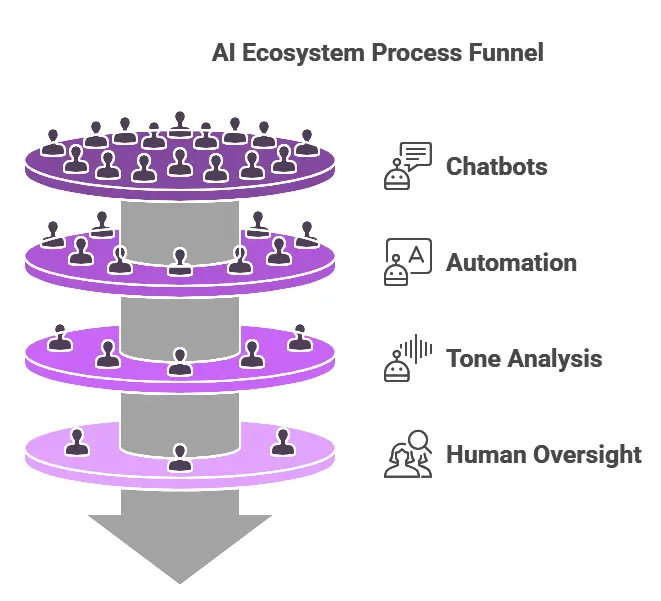
AI and Personalized Communication
AI tailors conversations by analyzing vast amounts of user data—from previous behavior to contextual signals. This enables tools to deliver relevant, timely messages that resonate more personally.
Key applications include:
- Chatbots that remember user preferences, adapt tone, and simulate human nuance
- Predictive marketing campaigns that tailor content based on browsing history, purchase patterns, and psychographics
According to Microsoft’s XiaoIce research, designing chatbots with emotional intelligence and memory-based dialogue leads to significantly higher long-term user engagement and perceived empathy.
Personalization leads to more than just clicks—it builds customer trust and brand affinity, turning passive users into active advocates. Companies like Duolingo show how AI-first approaches deliver tailored learning experiences that keep users engaged long-term.
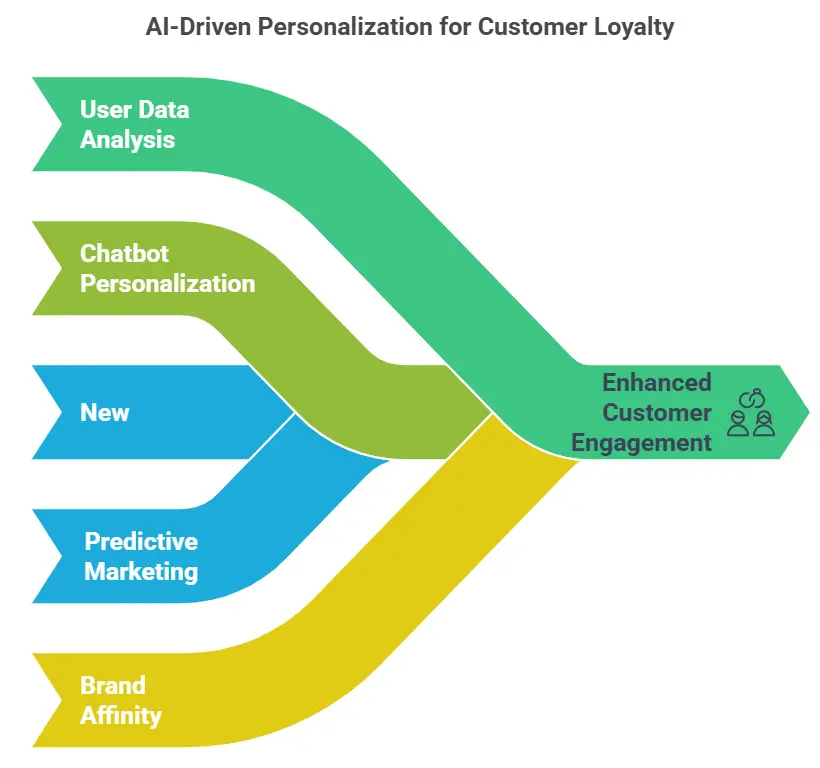
Breaking Language Barriers with AI
Thanks to AI, real-time language translation has become increasingly reliable and accessible. Tools like Google Translate and DeepL utilize advanced neural machine translation (NMT) to interpret not just words, but context and intent.
Cutting-edge features include:
- Samsung Galaxy Live Translate: Enables bilingual phone calls with real-time subtitles
- Live transcription tools for webinars and meetings
These innovations help businesses communicate across borders, fostering inclusivity, expanding markets, and reducing language-related friction in cross-cultural teams.
For a technical overview of neural translation systems, see this comprehensive review covering methods, tools, and industry applications.
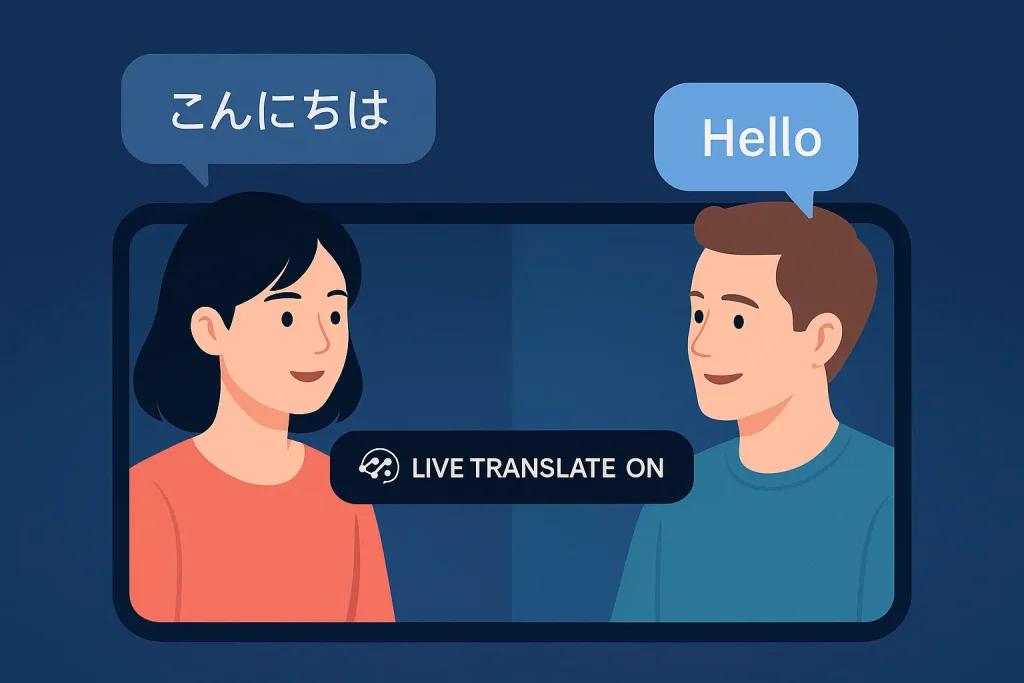
AI-Powered Communication Automation
AI automates communication processes that once required human input:
- Customer service chatbots now resolve thousands of inquiries daily with speed and consistency
- Healthcare bots assist with patient onboarding, appointment booking, and symptom triage
- Education bots provide 24/7 tutoring support, improving learning outcomes
Accent-normalization tools like Sanas, used in call centers, adjust voice patterns in real time to improve clarity. These technologies reduce workload, minimize human error, and free up teams for strategic and creative tasks.
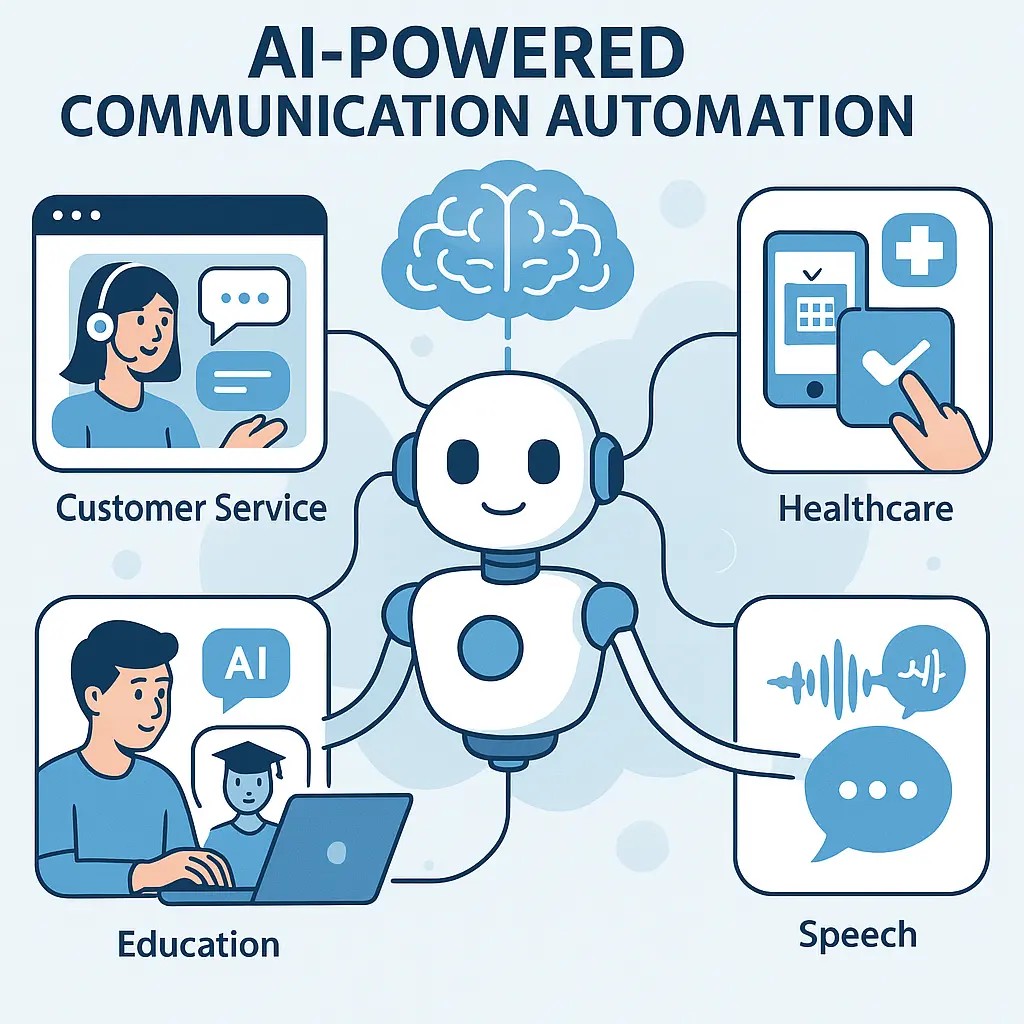
Real-Time Collaboration and AI Tools
Remote and hybrid teams rely on AI to stay productive. Tools like Samsung Note Assist convert spoken ideas into organized summaries, ensuring key points are captured and distributed.
Visual collaboration is also booming:
- Canva and Flourish enable teams to create charts, infographics, and reports using AI prompts
- Automated data dashboards provide real-time insights without manual intervention
This shift to visual-first communication helps teams digest complex data quickly and make informed decisions.
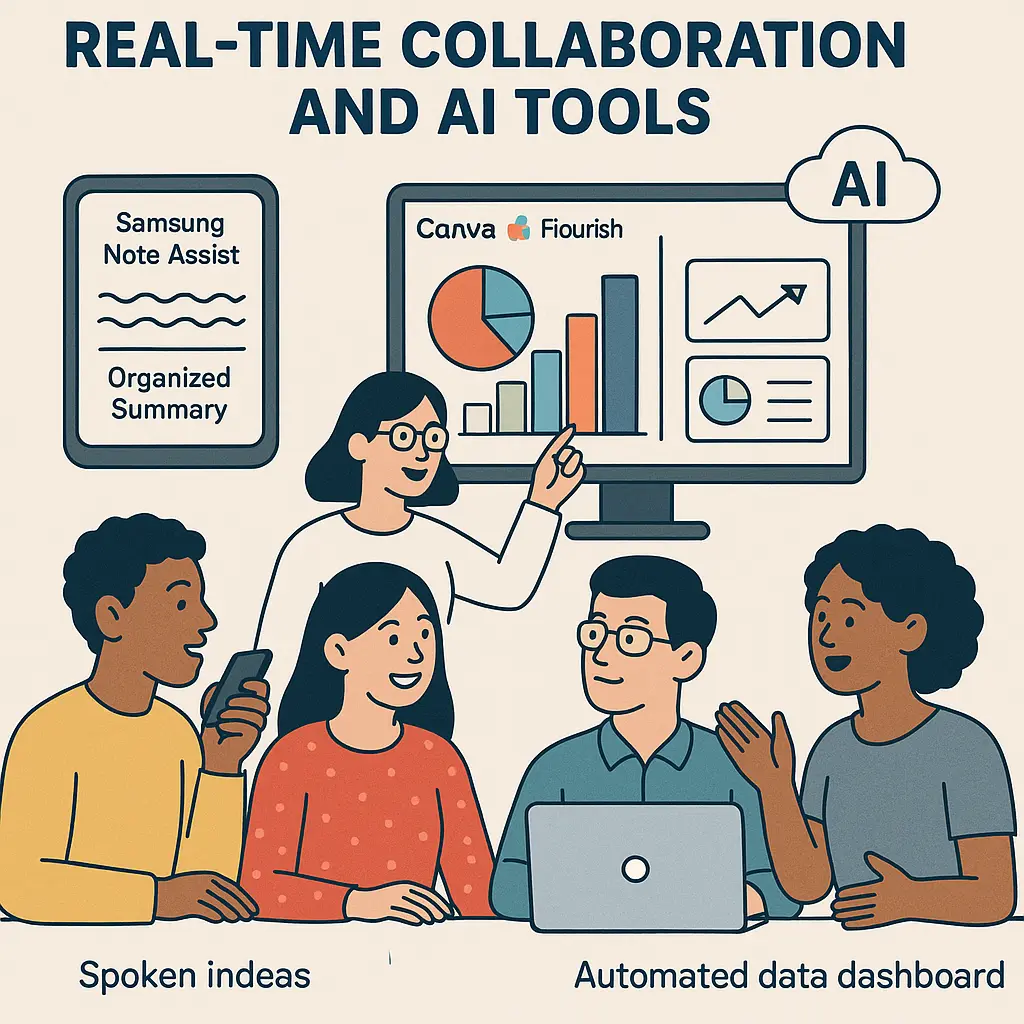
The Changing Nature of Workplace Communication
AI is redefining how professionals write, speak, and respond:
- Email is giving way to chat-based tools like Slack, emphasizing brevity and immediacy
- Tone-adjustment features in writing platforms suggest ways to sound more empathetic or assertive
As AI helps normalize emoji use, slang, and informal expressions, professional environments are adapting to a more casual communication culture. While this boosts relatability, it also challenges traditional norms around formality and professionalism.

New Communication Styles: Clarity and Precision
In a world flooded with information, AI promotes concise and effective messaging. Writing assistants powered by NLP highlight redundancy, suggest simplifications, and help shape coherent narratives.
Emerging trends include:
- Data storytelling: Presenting insights as narrative visualizations
- Tone tuning: Tailoring language to different audiences (e.g., executives vs. developers)
This evolution encourages workplace communication that is both clear and action-oriented, reducing miscommunication and increasing engagement.
Ethical and Privacy Challenges in AI Communication
With AI shaping messages and collecting data, ethical risks multiply. A 2025 review on chatbot ethics proposes a multi-stakeholder framework to address risks like emotional manipulation, data misuse, and consent blind spots—key challenges for AI communication platforms.
- Consent: Are users aware their interactions are used for training algorithms?
- Bias: Are underrepresented voices marginalized in model outcomes?
- Transparency: Can users trace how decisions were made?
Regulatory frameworks like the GDPR and the EU AI Act address these concerns by requiring companies to disclose data usage, ensure human oversight, and audit algorithmic fairness.
Checklist: Consent ✓ | Bias checks ✓ | Transparent policies ✓ | Human review ✓ | Data audits ✓

AI’s Broader Role in Complex Communication Tasks
Beyond user-facing interactions, AI facilitates communication between machines and across technical systems. In sectors like logistics, energy, and finance, AI agents coordinate tasks and make collaborative decisions.
Applications include:
- Healthcare: AI delivers lab results through secure messaging interfaces
- Finance: AI assistants explain billing or offer investment advice
- Logistics: Predictive systems communicate delays and reroute deliveries in real time
These systems not only handle information exchange but also reason and react, making machine-to-machine dialogue a cornerstone of operational efficiency.
Building Future Communication Skills
To navigate this new landscape, professionals need both technical knowledge and interpersonal finesse. Institutions like Capitol Technology University now offer coursework in:
- Data ethics and responsible AI use
- Natural language technologies and digital rhetoric
- Soft skills training using AI-simulated role play
Meanwhile, companies are developing internal guidelines and investing in training programs that prepare staff to collaborate with AI tools ethically and effectively.
Conversational AI: Architecture and Insights
AI-driven communication systems depend on sophisticated components working together:
Core Technologies:
- Natural Language Processing (NLP): Enables machines to read, decipher, and understand language
- Natural Language Understanding (NLU): Identifies user intent, mood, and context
- Dialogue Management Systems: Orchestrate multi-turn conversations
- Response Generation: Uses pre-trained models to produce relevant replies
- Multimodal Interfaces: Integrate voice, text, images, and gesture inputs
Innovations:
- Emotion-aware bots: Adjust responses based on detected mood
- Multilingual models: Bridge language gaps instantly
- Adaptive learning loops: Improve with user feedback over time
Use cases span:
- Therapy: Bots offer guided cognitive behavioral sessions
- Retail: Virtual agents recommend products and resolve complaints
- Education: Tutors tailor lessons based on comprehension rates
AI Girlfriends and Emotional Communication
One of the most culturally visible—and controversial—applications of AI in communication is the rise of AI girlfriends and companion bots. These AI agents simulate emotional relationships, engaging users in ongoing dialogue that feels supportive, responsive, and even affectionate.
The emotional design of long-term AI companionships builds on findings from Microsoft’s social chatbot study, which showed that AI capable of empathy and context awareness fosters stronger user bonding.
For a deeper dive into how these systems work and their growing cultural relevance, visit our dedicated page: What is an AI Girlfriend? engaging users in ongoing dialogue that feels supportive, responsive, and even affectionate.
These tools rely heavily on advanced natural language understanding, emotional modeling, and context memory to maintain conversations that mimic intimacy. While they are often marketed for entertainment or companionship, they raise broader questions about:
- Emotional dependency on AI communication
- The line between simulation and manipulation
- How society redefines human connection
AI companions illustrate how communication is evolving beyond utility to include emotional fulfillment, pushing boundaries of how people relate not just to machines—but to each other through machines.
Conclusion
AI is revolutionizing how we connect—making communication faster, more inclusive, and increasingly intelligent. From personalized marketing to healthcare support and interspecies dialogue, its applications are expanding daily.
But with innovation comes responsibility. Ensuring that AI systems are fair, private, and transparent is essential to building a future where technology enhances rather than replaces human interaction.
Note: While our research includes AI romantic communication, this article does not promote or endorse any specific companionship apps. We focus on ethical, informative, and educational coverage of AI systems in communication.
FAQs
What are AI chatbots?
AI chatbots are conversational programs that simulate human dialogue using data and machine learning. Common in customer service and education, they offer personalized, 24/7 interactions.
Can AI replace human communication?
Not entirely. AI excels at routine exchanges but lacks human empathy and nuance. Human oversight remains essential.
Are AI conversations private?
Not always. AI tools may store and analyze data. Privacy depends on encryption, consent, and regulations like the GDPR.
How accurate is real-time translation?
Modern AI translation tools are highly accurate, thanks to neural networks, but still struggle with idioms and context. Human review is often needed.
What policies should businesses use?
Organizations should require transparency, offer employee training, conduct bias audits, and ensure user consent for AI communication systems.

